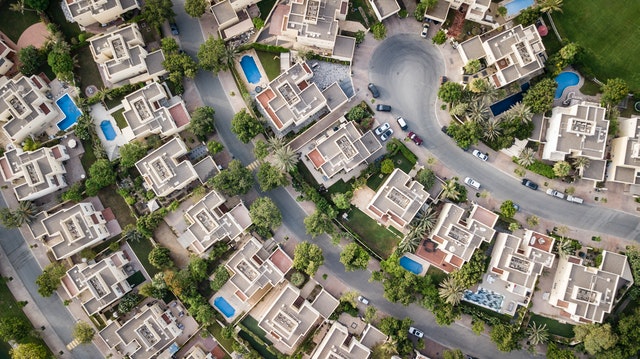[vc_row][vc_column][vc_column_text]
Guest Post by Property Pillar Management.
They provide residential and commercial property management in Winnipeg, Manitoba and surrounding areas. From small single family homes to apartment blocks to commercial spaces.
Buying an investment property in Canada is one of the best ways to diversify your assets. In addition to the promise of earning passive income from rents, most investment properties hold potential for capital gain. Investment properties also offer a reliable hedge against inflation because property values and rental rates normally stay ahead of the rate of inflation, explains Pillar Management in Winnipeg. If you have a portfolio of high-performing investment properties, they can serve as a viable retirement plan.
However, financing an investment property is different from financing a principal residence. Successfully investing in properties requires a higher level of financial expertise than is needed to manage your principal mortgage. Therefore, lenders impose more difficult terms on borrowing to invest in an investment property. They view such loans as carrying a higher level of risk and try to minimize that risk by asking more from potential property investors.
What should you know before applying for investment property financing?
Required documents
The following are the documents lenders will require to kick off the loan application process:
- A purchase agreement with the seller.
- Proof that you have enough money set aside to make the down payment on the property.
- Proof that there are existing tenants in the building (where applicable).
- Zoning documentation to show that you are buying a residential property (vs a commercial property).
- Proof that you earn enough income and have been doing so for the last 2-3 years (a job letter, pay stubs or Notice of Assessment for two years of T1 Generals if you are self-employed).
A desirable credit score
Your credit score affects how much lenders will ask you to pay down. Borrowers with a score of 620 (which is the accepted minimum for investment property financing) will have to make a down payment of 20%. However, if a borrower’s credit score is 720 and above, the lender may let them make a down payment of 15%. But the above only applies to single-unit investment properties. For buildings with more than one unit, requirements may be higher.
The type of building
The building you want to buy matters; it determines how strict the terms will be. Buildings with 1-4 units are zoned as residential, and the lending criteria are just a bit more difficult than those for a primary mortgage.

Buildings with 5+ units are commercial; the requirements and interest rates are much higher. It also matters if a property is going to be owner-occupied or not. Residential buildings where the owner lives in one of the units require a smaller down payment amount than those where the owner does not live on the property.
Your debt ratio
The debt ratio measures how much of your monthly income is needed to meet your monthly debt obligations (mortgage payments for your primary residence and investment property) and expenses. The two methods for assessing this are the Gross Debt Service Ratio (GDS) and Total Debt Service (TDS). They use the PITH (Principal + Interest + Property Taxes + Heating) on the property, your other debts and your gross income to determine your financial stability. To get a mortgage approval, your GDS should be 35% (GDS) and TDS 42%, at least.
Down payment
The standard down payment for non-owner-occupied homes is 20%. But there are other conditions lenders look at determining how much down payment a borrower should make. If a building has 1-2 units and is owner-occupied, the minimum down payment will be 5%. However, if the owner will not be live in the property, the minimum down payment is 20%.

Owner-occupied buildings with 3-4 units attract a minimum down payment of 10%. But if the building is non-owner-occupied, the down payment is 20%. Additionally, if the purchase price for a property is over $500,000, borrowers for owner-occupied properties may pay 5% on the first $500,000 and 10% on any amounts over that initial $500,000.
Maximum amortization period
Depending on how much down payment you make on the property, your amortization period will be between 20 years and 35 years. For down payments of less than 20%, the borrower will get a maximum amortization period of 25 years. However, you can get an amortization period of between 30-35 years if you make a down payment of 20% and over. Amortization periods do not depend on whether a home is owner-occupied or non-owner-occupied.
The mortgage rate and mortgage default insurance
Generally, interest rates on investment property loans will be 0.50%-0.75% higher than the rates for a primary mortgage. Some of the factors discussed will influence the actual rate you get. Also, you may have to buy mortgage default insurance. You will get very competitive rates if you purchase mortgage default insurance when borrowing to invest in a building with 1-4 units. However, if you make a down payment of 20% or more, lenders will rarely require you to buy mortgage default insurance. That is unless your financial situation forces the lender to make this a requirement.
The above is a highly abbreviated summary of what you need when applying for an investment property mortgage. For detailed guidance that takes the specifics of your situation into account, you should contact a financial planner.
Disclaimer: The views and opinions expressed in this article are those of the author and do not necessarily represent those of Harbourfront Wealth Management Inc., member of the Canadian Investor Protection Fund.
[/vc_column_text][/vc_column][/vc_row]

